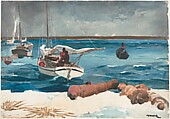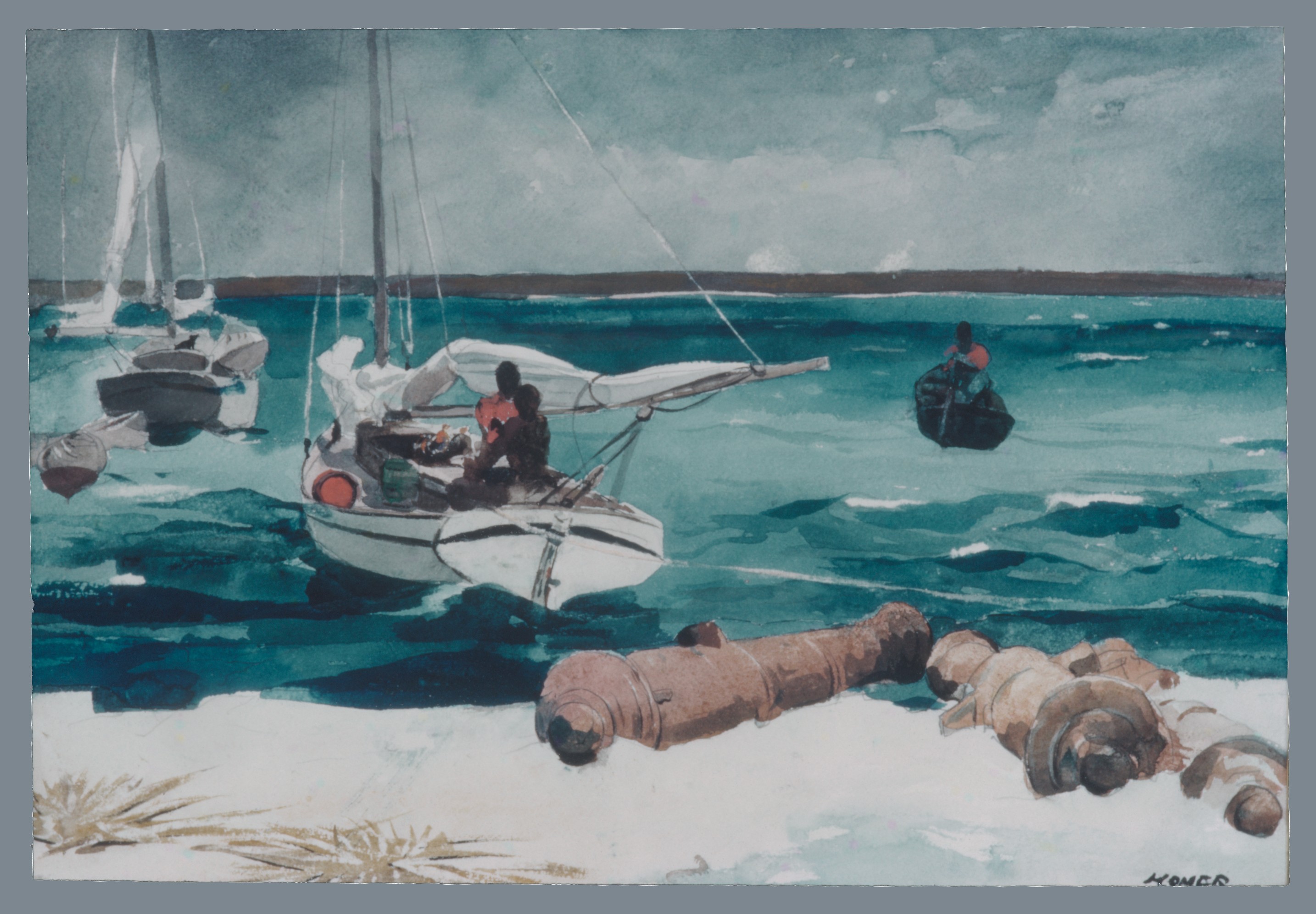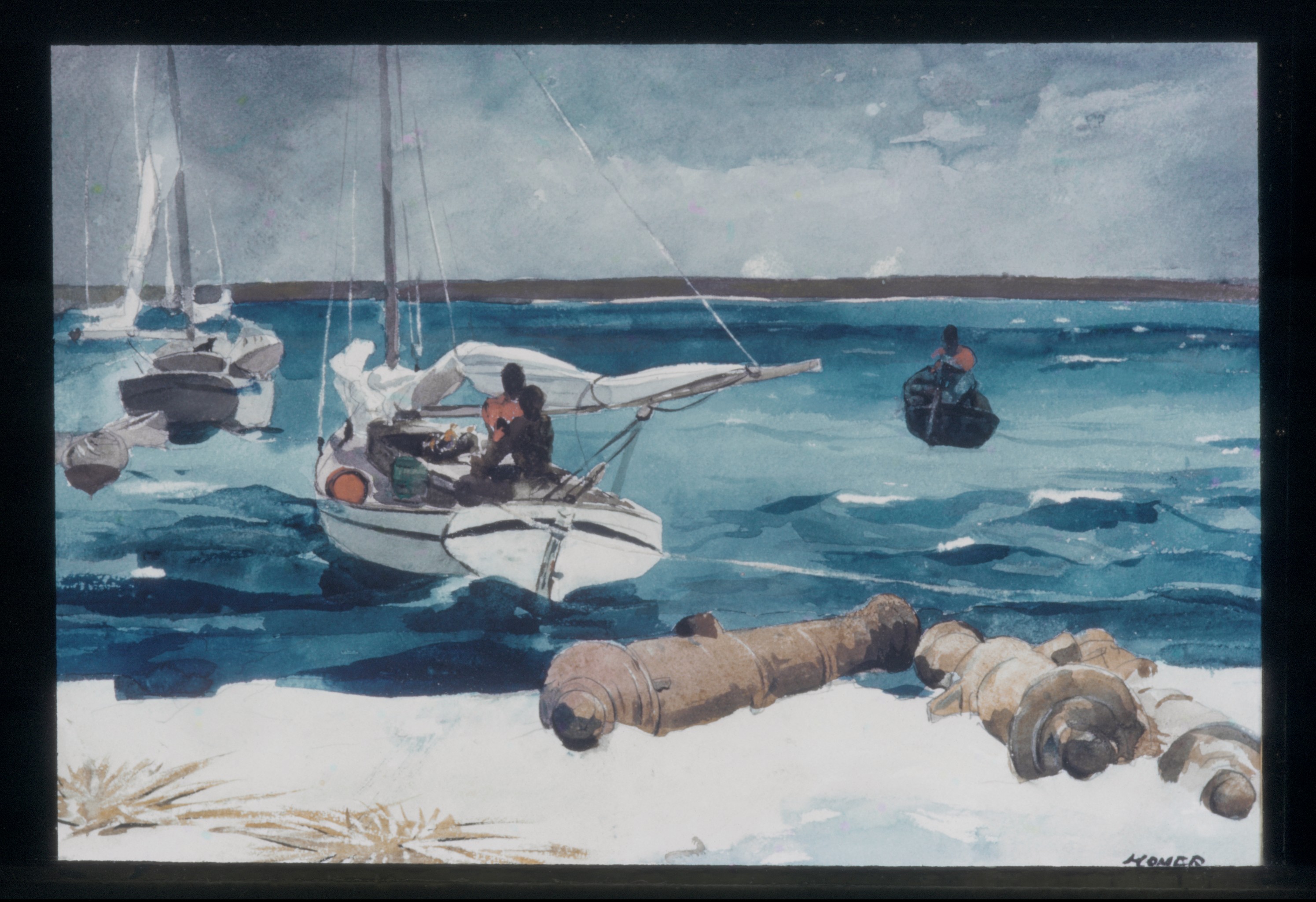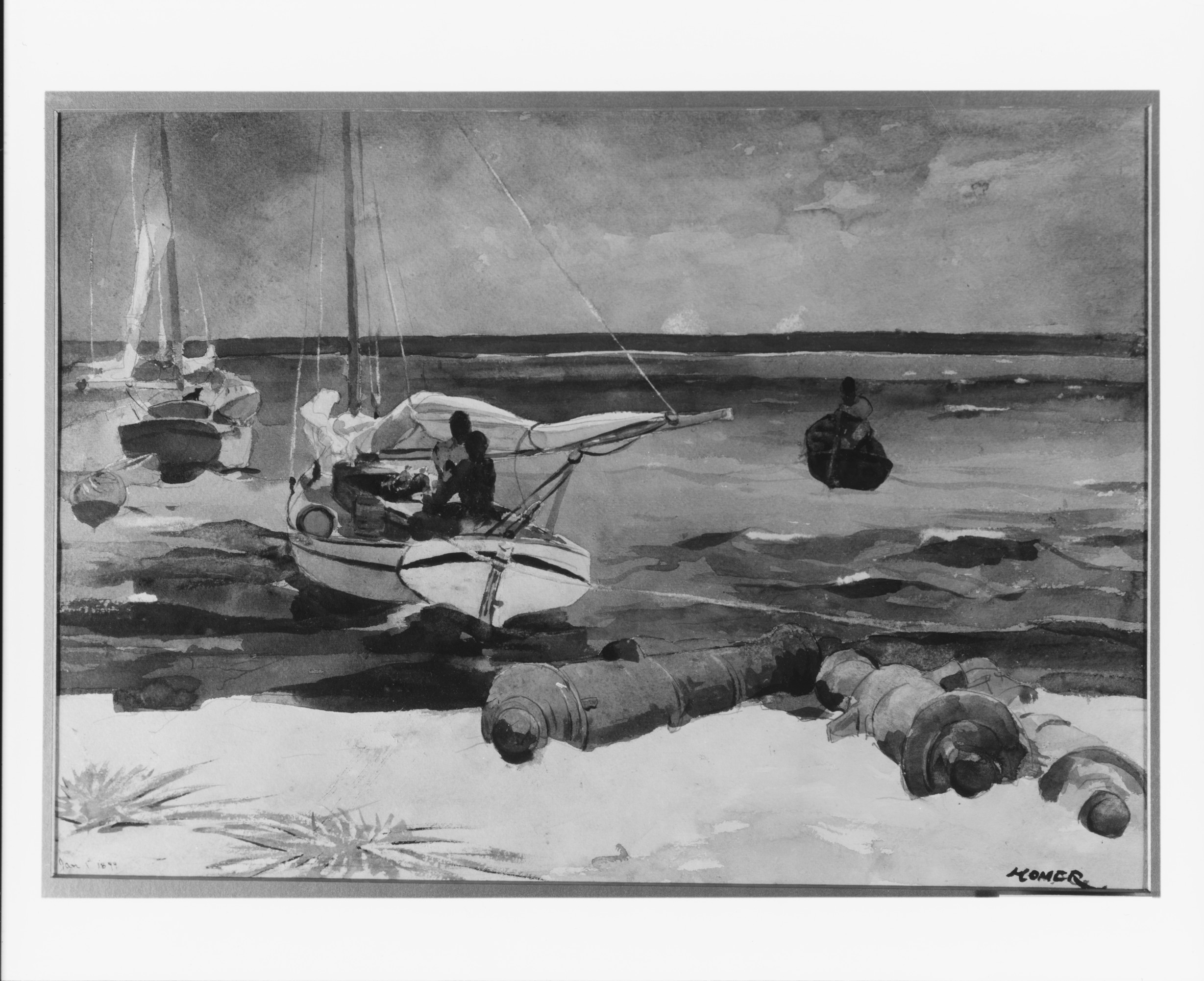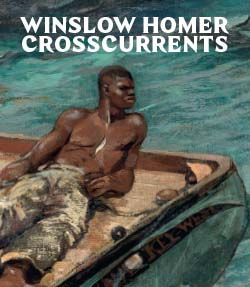Nassau
Winslow Homer American
Not on view
In this dazzling watercolor of Bahamian men either heading out to or returning from their work at sea, Homer included discarded cannons—artifacts from one of the island’s British forts—splayed across the beach. One contemporary guidebook noted that these symbols of colonial history had become tourist attractions. Homer’s interest in this imperial legacy corresponds to the increasing U.S. presence in the region and on the world stage. At lower left, the artist indicated that the watercolor was painted on January 1, 1899, a significant date. Under the provisions of the 1898 Treaty of Paris, which established the end of the Spanish-Cuban-American war, January 1 marked the day Spain relinquished control of Cuba and the United States began its military occupation of the island.
Due to rights restrictions, this image cannot be enlarged, viewed at full screen, or downloaded.
This artwork is meant to be viewed from right to left. Scroll left to view more.
